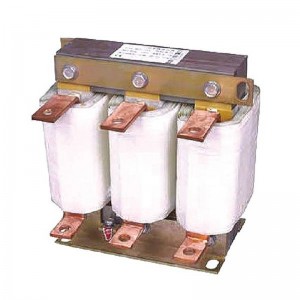In the field of industrial automation, efficient and reliable operation of AC drives is critical to maintaining productivity and minimizing downtime. The input reactor is one of the important components that plays an important role in ensuring optimal performance of the AC drive. Line reactors are current-limiting devices used on the input side of frequency converters to protect them from transient overvoltages and improve overall system performance.
Line reactors have multiple functions that are essential for the smooth operation of the AC drive. They effectively reduce surge and peak currents, which helps prevent damage to drives and other connected devices. By limiting current flow, line reactors also help improve power factor, thereby increasing energy efficiency and reducing electricity costs. In addition, they play a vital role in suppressing grid harmonics, ensuring that the power supply remains stable and free from damaging electrical noise. This in turn helps improve the input current waveform, making the AC drive run smoother and more reliably.
Integrating a line reactor into the input side of an AC drive offers many advantages, making it an indispensable component in industrial applications. By mitigating transient overvoltages and current surges, line reactors can extend the life of AC drives and other connected equipment, thereby reducing maintenance costs and downtime. Improved power factor and suppression of grid harmonics contribute to overall energy efficiency, in line with the growing emphasis on sustainable and cost-effective industrial practices.
In summary, line reactors are an important component in improving the performance and service life of AC drives in industrial environments. Their ability to limit current, reduce surges, improve power factor and suppress harmonics is invaluable in ensuring smooth and efficient operation of AC drives. By integrating line reactors into the input side of AC drives, businesses can benefit from increased reliability, reduced maintenance costs and improved energy efficiency, ultimately contributing to a more sustainable and efficient industrial environment.
Post time: Mar-11-2024
